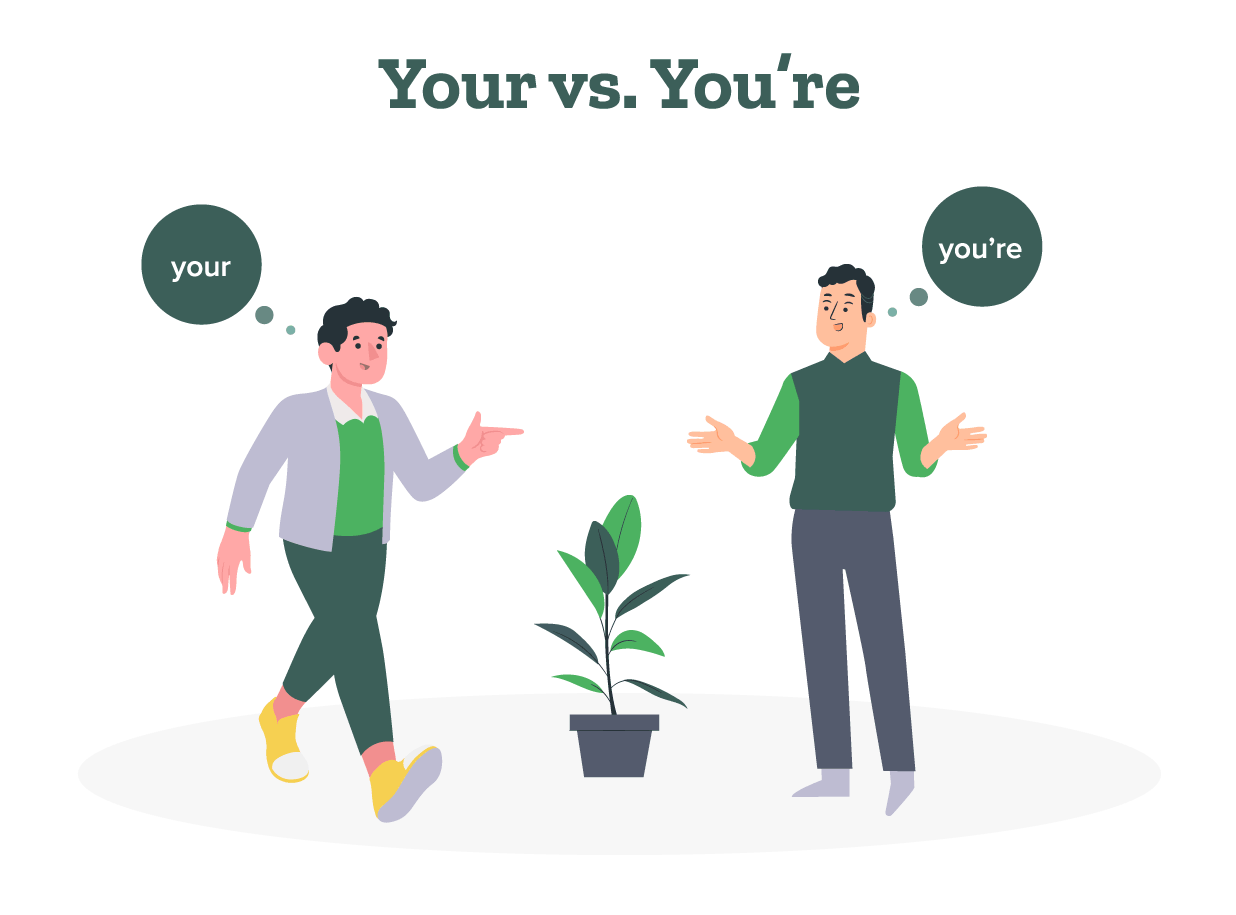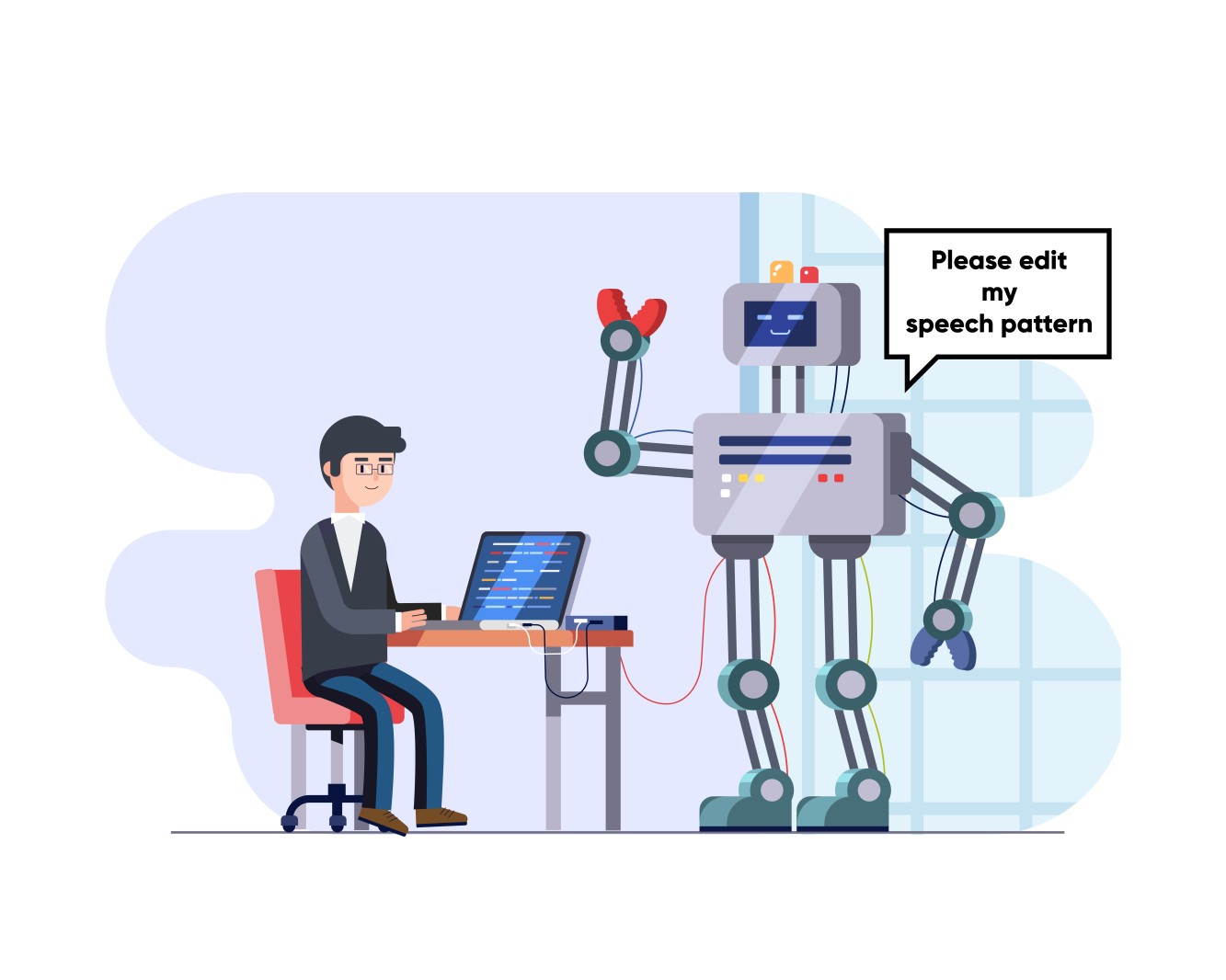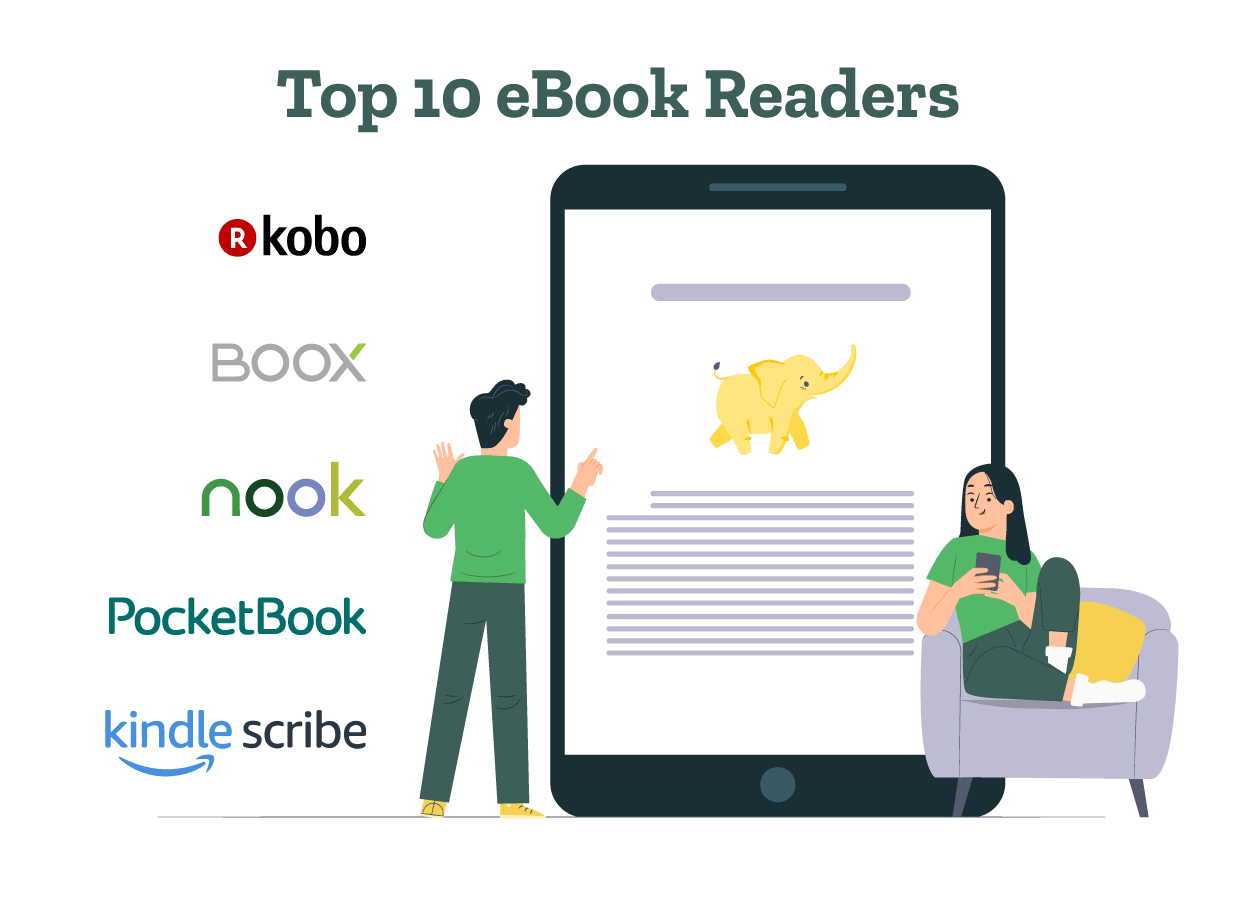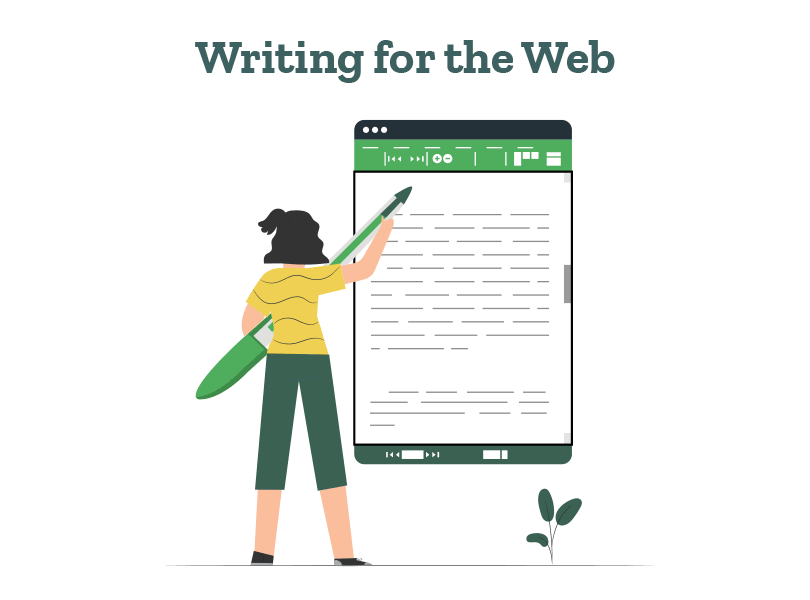- A List of Writing Contests in 2022 | Exciting Prizes!
- Em Dash vs. En Dash vs. Hyphen: When to Use Which
- Book Proofreading 101: The Beginner’s Guide
- Screenplay Editing: Importance, Cost, & Self-Editing Tips
- Screenplay Proofreading: Importance, Process, & Cost
- Script Proofreading: Rates, Process, & Proofreading Tips
- Manuscript Proofreading | Definition, Process & Standard Rates
- Tips to Write Better if English Is Your Second Language
- Novel Proofreading | Definition, Significance & Standard Rates
- Top 10 Must-Try Writing Prompt Generators in 2024
- 100+ Creative Writing Prompts for Masterful Storytelling
- Top 10 eBook Creator Tools in 2024: Free & Paid
- 50 Timeless and Unforgettable Book Covers of All Time
- What Is Flash Fiction? Definition, Examples & Types
- 80 Enchanting Christmas Writing Prompts for Your Next Story
- Your Guide to the Best eBook Readers in 2024
- Top 10 Book Review Clubs of 2025 to Share Literary Insights
- 2024’s Top 10 Self-Help Books for Better Living
- Writing Contests 2023: Cash Prizes, Free Entries, & More!
- What Is a Book Teaser and How to Write It: Tips and Examples
- Audiobook vs. EBook vs. Paperback in 2024: (Pros & Cons)
- How to Get a Literary Agent in 2024: The Complete Guide
- Alpha Readers: Where to Find Them and Alpha vs. Beta Readers
- Author Branding 101: How to Build a Powerful Author Brand
- A Guide on How to Write a Book Synopsis: Steps and Examples
- How to Write a Book Review (Meaning, Tips & Examples)
- 50 Best Literary Agents in the USA for Authors in 2024
- Building an Author Website: The Ultimate Guide with Examples
- Top 10 Paraphrasing Tools for All (Free & Paid)
- Top 10 Book Editing Software in 2024 (Free & Paid)
- What Are Large Language Models and How They Work: Explained!
- Top 10 Hardcover Book Printing Services [Best of 2024]
- 2024’s Top 10 Setting Generators to Create Unique Settings
- Different Types of Characters in Stories That Steal the Show
- Top 10 Screenplay & Scriptwriting Software (Free & Paid)
- 10 Best AI Text Generators of 2024: Pros, Cons, and Prices
- Top 10 Must-Try Character Name Generators in 2024
- 10 Best AI Text Summarizers in 2024 (Free & Paid)
- 2024’s 10 Best Punctuation Checkers for Error-Free Text
- 11 Best Story Structures for Writers (+ Examples!)
- How to Write a Book with AI in 2024 (Free & Paid Tools)
- Writing Contests 2024: Cash Prizes & Free Entries!
- Patchwork Plagiarism: Definition, Types, & Examples
- Simple Resume Formats for Maximum Impact With Samples
- What Is a Complement in a Sentence? (Meaning, Types & Examples)
- What are Clauses? Definition, Meaning, Types, and Examples
- Persuasive Writing Guide: Techniques & Examples
- How to Paraphrase a Text (Examples + 10 Strategies!)
- A Simple Proofreading Checklist to Catch Every Mistake
- Top 10 AI Resume Checkers for Job Seekers (Free & Paid)
- 20 Best Comic Book Covers of All Time!
- How to Edit a Book: A Practical Guide with 7 Easy Steps
- How to Write an Autobiography (7 Amazing Strategies!)
- How to Publish a Comic Book: Nine Steps & Publishing Costs
- Passive and Active Voice (Meaning, Examples & Uses)
- How to Publish a Short Story & Best Publishing Platforms
- What Is Expository Writing? Types, Examples, & 10 Tips
- 10 Best Introduction Generators (Includes Free AI Tools!)
- Creative Writing: A Beginner’s Guide to Get Started
- How to Sell Books Online (Steps, Best Platforms & Tools)
- Top 10 Book Promotion Services for Authors (2025)
- 15 Different Types of Poems: Examples & Insight into Poetic Styles
- 10 Best Book Writing Apps for Writers 2025: Free & Paid!
- Top 10 AI Humanizers of 2025 [Free & Paid Tools]
- How to Write a Poem: Step-by-Step Guide to Writing Poetry
- 100+ Amazing Short Story Ideas to Craft Unforgettable Stories
- The Top 10 Literary Devices: Definitions & Examples
- Top 10 AI Translators for High-Quality Translation in 2025
- Top 10 AI Tools for Research in 2025 (Fast & Efficient!)
- 50 Best Essay Prompts for College Students in 2025
- Top 10 Book Distribution Services for Authors in 2025
- Best 101 Greatest Fictional Characters of All Time
- Top 10 Book Title Generators of 2025
- Best Fonts and Sizes for Books: A Complete Guide
- What Is an Adjective? Definition, Usage & Examples
- How to Track Changes in Google Docs: A 7-Step Guide
- Best Book Review Sites of 2025: Top 10 Picks
- Parts of a Book: A Practical, Easy-to-Understand Guide
- What Is an Anthology? Meaning, Types, & Anthology Examples
- How to Write a Book Report | Steps, Examples & Free Template
- 10 Best Plot Generators for Engaging Storytelling in 2025
- 30 Powerful Poems About Life to Inspire and Uplift You
- What Is a Poem? Poetry Definition, Elements, & Examples
- Metonymy: Definition, Examples, and How to Use It In Writing
- How to Write a CV with AI in 9 Steps (+ AI CV Builders)
- What Is an Adverb? Definition, Types, & Practical Examples
- How to Create the Perfect Book Trailer for Free
- Top 10 Book Publishing Companies in 2025
- 14 Punctuation Marks: A Guide on How to Use with Examples!
- Translation Services: Top 10 Professional Translators (2025)
- 10 Best Free Online Grammar Checkers: Features and Ratings
- 30 Popular Children’s Books Teachers Recommend in 2025
- 10 Best Photobook Makers of 2025 We Tested This Year
- Top 10 Book Marketing Services of 2025: Features and Costs
- Top 10 Book Printing Services for Authors in 2025
- 10 Best AI Detector Tools in 2025
- Audiobook Marketing Guide: Best Strategies, Tools & Ideas
- 10 Best AI Writing Assistants of 2025 (Features + Pricing)
- How to Write a Book Press Release that Grabs Attention
- 15 Powerful Writing Techniques for Authors in 2025
- Generative AI: Types, Impact, Advantages, Disadvantages
- Top 101 Bone-Chilling Horror Writing Prompts
- 25 Figures of Speech Simplified: Definitions and Examples
- Top 10 AI Rewriters for Perfect Text in 2025 (Free & Paid)
- Best EBook Cover Design Services of 2025 for Authors
- Writing Contests 2025: Cash Prizes, Free Entries, and More!
- Top 10 Book Writing Software, Websites, and Tools in 2025
- National Novel Writing Month (NaNoWriMo)
- What is a Book Copyright Page?
- Final Checklist: Is My Article Ready for Submitting to Journals?
- 8 Pre-Publishing Steps to Self-Publish Your Book
- 7 Essential Elements of a Book Cover Design
- How to Copyright Your Book in the US, UK, & India
- Beta Readers: Why You Should Know About Them in 2024
- How to Publish a Book in 2024: Essential Tips for Beginners
- Book Cover Design Basics: Tips & Best Book Cover Ideas
- Why and How to Use an Author Pen Name: Guide for Authors
- How to Format a Book in 2025: 7 Tips for Book Formatting
- What is Manuscript Critique? Benefits, Process, & Cost
- 10 Best Ghostwriting Services for Authors in 2025
- ISBN Guide 2025: What Is an ISBN and How to Get an ISBN
- Best Manuscript Editing Services of 2025
- How to Hire a Book Editor in 5 Practical Steps
- Self-Publishing Options for Writers
- How to Promote Your Book Using a Goodreads Author Page
- 7 Essential Elements of a Book Cover Design
- What Makes Typesetting a Pre-Publishing Essential for Every Author?
- 4 Online Publishing Platforms To Boost Your Readership
- Typesetting: An Introduction
- Quick Guide to Novel Editing (with a Self-Editing Checklist)
- Self-Publishing vs. Traditional Publishing: 2024 Guide
- How to Publish a Book in 2024: Essential Tips for Beginners
- How to Publish a Book on Amazon: 8 Easy Steps [2024 Update]
- What are Print-on-Demand Books? Cost and Process in 2024
- What Are the Standard Book Sizes for Publishing Your Book?
- How to Market Your Book on Amazon to Maximize Sales in 2024
- Top 10 Hardcover Book Printing Services [Best of 2024]
- How to Find an Editor for Your Book in 8 Steps (+ Costs!)
- What Is Amazon Self-Publishing? Pros, Cons & Key Insights
- Manuscript Editing in 2024: Elevating Your Writing for Success
- Know Everything About How to Make an Audiobook
- A Simple 14-Point Self-Publishing Checklist for Authors
- How to Write an Engaging Author Bio: Tips and Examples
- Book Cover Design Basics: Tips & Best Book Cover Ideas
- How to Publish a Comic Book: Nine Steps & Publishing Costs
- Why and How to Use an Author Pen Name: Guide for Authors
- How to Sell Books Online (Steps, Best Platforms & Tools)
- A Simple Guide to Select the Best Self-Publishing Websites
- 10 Best Book Cover Design Services of 2025: Price & Ratings
- How Much Does It Cost to Self-Publish a Book in 2025?
- Quick Guide to Book Editing [Complete Process & Standard Rates]
- How to Distinguish Between Genuine and Fake Literary Agents
- What is Self-Publishing? Everything You Need to Know
- How to Copyright a Book in 2025 (Costs + Free Template)
- The Best eBook Conversion Services of 2025: Top 10 Picks
- 10 Best Self-Publishing Companies of 2025: Price & Royalties
- 10 Best Photobook Makers of 2025 We Tested This Year
- Book Cover Types: Formats, Bindings & Styles
- ISBN Guide 2025: What Is an ISBN and How to Get an ISBN
- A Beginner’s Guide on How to Self Publish a Book (2025)
- How to start your own online publishing company?
- 8 Tips To Write Appealing Query Letters
- Self-Publishing vs. Traditional Publishing: 2024 Guide
- How to Publish a Book in 2024: Essential Tips for Beginners
- What are Print-on-Demand Books? Cost and Process in 2024
- How to Write a Query Letter (Examples + Free Template)
- Third-person Point of View: Definition, Types, Examples
- How to Write an Engaging Author Bio: Tips and Examples
- How to Publish a Comic Book: Nine Steps & Publishing Costs
- Top 10 Book Publishing Companies in 2025
- 10 Best Photobook Makers of 2025 We Tested This Year
- Book Cover Types: Formats, Bindings & Styles
- ISBN Guide 2025: What Is an ISBN and How to Get an ISBN
- How to Create Depth in Characters
- Starting Your Book With a Bang: Ways to Catch Readers’ Attention
- Research for Fiction Writers: A Complete Guide
- Short stories: Do’s and don’ts
- How to Write Dialogue: 7 Rules, 5 Tips & 65 Examples
- What Are Foil and Stock Characters? Easy Examples from Harry Potter
- How To Write Better Letters In Your Novel
- On Being Tense About Tense: What Verb Tense To Write Your Novel In
- How To Create A Stellar Plot Outline
- How to Punctuate Dialogue in Fiction
- On Being Tense about Tense: Present Tense Narratives in Novels
- The Essential Guide to Worldbuilding [from Book Editors]
- What Is Point of View? Definition, Types, & Examples in Writing
- How to Create Powerful Conflict in Your Story | Useful Examples
- How to Write a Book: A Step-by-Step Guide
- How to Write a Short Story in 6 Simple Steps
- How to Write a Novel: 8 Steps to Help You Start Writing
- What Is a Stock Character? 150 Examples from 5 Genres
- Joseph Campbell’s Hero’s Journey: Worksheet & Examples
- Novel Outline: A Proven Blueprint [+ Free Template!]
- Character Development: 7-Step Guide for Writers
- What Is NaNoWriMo? Top 7 Tips to Ace the Writing Marathon
- What Is the Setting of a Story? Meaning + 7 Expert Tips
- What Is a Blurb? Meaning, Examples & 10 Expert Tips
- What Is Show, Don’t Tell? (Meaning, Examples & 6 Tips)
- How to Write a Book Summary: Example, Tips, & Bonus Section
- How to Write a Book Description (Examples + Free Template)
- 10 Best Free AI Resume Builders to Create the Perfect CV
- A Complete Guide on How to Use ChatGPT to Write a Resume
- 10 Best AI Writer Tools Every Writer Should Know About
- How to Write a Book Title (15 Expert Tips + Examples)
- 100 Novel and Book Ideas to Start Your Book Writing Journey
- Exploring Writing Styles: Meaning, Types, and Examples
- Mastering Professional Email Writing: Steps, Tips & Examples
- How to Write a Screenplay: Expert Tips, Steps, and Examples
- Business Proposal Guide: How to Write, Examples and Template
- Different Types of Resumes: Explained with Tips and Examples
- How to Create a Memorable Protagonist (7 Expert Tips)
- How to Write an Antagonist (Examples & 7 Expert Tips)
- Writing for the Web: 7 Expert Tips for Web Content Writing
- 10 Best AI Text Generators of 2024: Pros, Cons, and Prices
- What are the Parts of a Sentence? An Easy-to-Learn Guide
- What Is Climax Of A Story & How To Craft A Gripping Climax
- What Is a Subject of a Sentence? Meaning, Examples & Types
- Object of a Sentence: Your Comprehensive Guide
- What Is First-Person Point of View? Tips & Practical Examples
- Second-person Point of View: What Is It and Examples
- 10 Best AI Essay Outline Generators of 2024
- Third-person Point of View: Definition, Types, Examples
- The Importance of Proofreading: A Comprehensive Overview
- Patchwork Plagiarism: Definition, Types, & Examples
- Simple Resume Formats for Maximum Impact With Samples
- The Ultimate Guide to Phrases In English – Types & Examples
- Modifiers: Definition, Meaning, Types, and Examples
- What are Clauses? Definition, Meaning, Types, and Examples
- Persuasive Writing Guide: Techniques & Examples
- What Is a Simile? Meaning, Examples & How to Use Similes
- Mastering Metaphors: Definition, Types, and Examples
- How to Publish a Comic Book: Nine Steps & Publishing Costs
- Essential Grammar Rules: Master Basic & Advanced Writing Skills
- Benefits of Using an AI Writing Generator for Editing
- Hyperbole in Writing: Definition and Examples
- 15 Best ATS-Friendly ChatGPT Prompts for Resumes in 2025
- How to Write a Novel in Past Tense? 3 Steps & Examples
- 10 Best Spell Checkers of 2025: Features, Accuracy & Ranking
- Foil Character: Definition, History, & Examples
- 5 Key Elements of a Short Story: Essential Tips for Writers
- How to Write a Children’s Book: An Easy Step-by-Step Guide
- How To Write a Murder Mystery Story
- What Is an Adjective? Definition, Usage & Examples
- Metonymy: Definition, Examples, and How to Use It In Writing
- Fourth-Person Point of View: A Unique Narrative Guide
- How to Write a CV with AI in 9 Steps (+ AI CV Builders)
- What Is an Adverb? Definition, Types, & Practical Examples
- How to Write A Legal Document in 6 Easy Steps
- 10 Best AI Story Generators in 2025: Write Captivating Tales
- How to Introduce a Character Effectively
- What is Rhetoric and How to Use It in Your Writing
- How to Write a Powerful Plot in 12 Steps
- How to Make Money as a Writer: Your First $1,000 Guide
- How to Write SEO Content: Tips for SEO-Optimized Content
- Types of Introductions and Examples
- What is a Cliffhanger? Definition, Examples, & Writing Tips
- How to Write Cliffhangers that Keep Readers Hooked!
- How to Write a Romance Novel: Step-by-Step Guide
- Top 10 Writing Tips from Famous Authors
- 10 Best Ghostwriting Services for Authors in 2025
- What is Ghostwriting? Meaning and Examples
- How to Become a Ghostwriter: Complete Career Guide
- How to Write a Speech that Inspires (With Examples)
- Theme of a Story | Meaning, Common Themes & Examples
- 10 Best AI Writing Assistants of 2025 (Features + Pricing)
- Generative AI: Types, Impact, Advantages, Disadvantages
- Worldbuilding Questions and Templates (Free)
- How to Avoid Plagiarism in 2025 (10 Effective Strategies!)
- How to Create Marketing Material
- What Is Worldbuilding? Steps, Tips, and Examples
- How to Avoid AI Detection in 2025 (6 Proven Techniques!)
- What is Syntax in Writing: Definition and Examples
- What is a Subplot? Meaning, Examples & Types
Still have questions? Leave a comment

Checklist: Dissertation Proposal
Enter your email id to get the downloadable right in your inbox!
[contact-form-7 id="12425" title="Checklist: Dissertation Proposal"]
Examples: Edited Papers
Enter your email id to get the downloadable right in your inbox!
[contact-form-7 id="12426" title="Examples: Edited Papers"]Need
Editing and
Proofreading Services?

Paperback vs. Hardcover in 2025: Which One to Pick?
 Jun 11, 2025
Jun 11, 2025 5
min read
5
min read
Do you want to make the best decision for your book’s success? While choosing between paperback vs. hardcover isn’t easy, we’ve simplified the process for you.
Personal preferences play a key role in choosing between hardcover and paperback formats, as individual tastes and needs greatly influence which option is most suitable.
We’ve added information about the costs involved for both formats. With this, we’ve also described how both formats can affect your book’s marketability and visual appeal. Understand the difference between hardcover and paperback formats to select the best one for your book!
Let’s begin by understanding the basics of paperbacks and hardcover formats.
What is a paperback book?
A paperback book is a type of book that has a soft, flexible cover and is made of paper or cardstock (also known as a softcover book). The cover is often attached to the book using glue, instead of stitches or staples.
Paperback covers are made from thick paper or cardstock, which gives them pliable covers and a lighter weight compared to hardcovers. This makes paperback books more portable and convenient for on-the-go reading.

Paperback books come in a variety of sizes, and there are many paperback types. Each paperback type represents a different book format suited to various genres and uses. The following are the important paperback types:
- Mass-market paperbacks- These are small-sized paperbacks, highly compact and affordable. Their size is approximately 4.25 x 6.87 inches. If you have written a romance/science fiction/ mystery novel, mass-market paperbacks can be the best choice for you!
- Trade paperbacks- Trade paperbacks are larger as compared to mass market paperbacks. Their size is usually 5.5 x 8.5 inches. Have you written a memoir or poetry book, or explored the non-fiction genre? You can consider choosing the trade paperback!
- A-format paperbacks- This format is used for pocket-sized books. The size is usually 4.33 x 7 inches.
- B-format paperback- If you want a format larger than a mass-market paperback, this is a good option. The size is typically 5.04 x 7.8 inches. It’s used for contemporary fiction, biographies, history books, memoirs, and science books.
- Digest size- This paperback format is generally 5.5 x 8.5 inches. It’s often used for smaller paperback books and genres like mystery and short story collections.
- Oversized paperbacks- While sizes vary, a commonly used oversized paperback size is 7 x 10 inches. This size is used for books that require more space, such as graphic novels, art books, cookbooks, or technical novels.
After understanding what is a paperback book, let’s explore everything about hardcover books in detail.
What is a hardcover book?
A hardcover book, also known as a hardback, has a stiff, thick cover made of cardboard, cloth, or occasionally leather. The standard size of a hardcover book is 6 x 9 inches. This size is usually used for contemporary novels, classics, romance, scholarly works, textbooks, biographies, memoirs, and self-help books.
Do you want a hardcover for a first-edition book? You can choose a trade hardcover then! Trade hardcovers have the same standard size. However, if you want a hardcover for a coffee table book, atlas, or art book, select a larger, oversized hardcover format. While the size of oversized large-format books varies, it is usually 8.5 x 11 inches.
The following are the different types of hardcovers:
- Dust-jacketed hardcovers- A dust jacket is an outer, print cover (made of paper) attached to the hardback cover. It protects the book from wear and tear. Hardcover versions are often chosen for collector’s items and special releases due to their premium quality.
- Jacketed case laminated hardcover– This type of hardcover has a printed design on the hardcover itself (case laminate). On top of this, the dust jacket (outer printed cover) is included.
- Lay-flat hardcover- These hardcover books allow the pages to remain completely flat when the book is open. Are you searching for a hardcover type to create a photo book, cookbook, or art book? If yes, the lay-flat hardcover format can be your best bet.
- Spiral-bound hardcover- These books can be customized in various sizes. They can be the perfect choice for directories, personalized albums, and instruction manuals.
- Cloth-covered hardcover- Did you know that hardcover books are covered with cloth such as linen, cotton, or synthetic fabrics? These books are usually selected for special editions, literary works, family heirlooms, and collectors’ items.
- Sewn hardcover- Also known as case-bound books, these hardcovers often come with a dust jacket. Interestingly, several sewn hardcovers also have headbands and tailbands for additional protection. They are used for children’s books, textbooks, library books, classic fiction, etc., as the sewn binding provides extra durability for heavy use by young readers.
- Glue-only binding hardcover- If you want a cost-effective hardcover, this is one of your best options. They are, however, not suitable for thick books, and when opened, their pages do not remain flat like lay-flat books.
When considering a hardcover for different purposes, selecting the right cover options is important to match the genre, audience, and intended use.
Hardback books are known for their premium reading experience, offering superior quality materials, a more sophisticated presentation, and a sense of value that appeals to collectors and readers alike.
To make the best choice between a paperback book vs. hardcover, let’s explore their pros and cons in detail.
Book production and printing
When it comes to book production and printing, the choice between paperback books and hardcover books plays a significant role in the final product’s quality, cost, and appeal. Hardcover books are typically crafted using premium materials, such as thick cardboard for the cover and high-quality, coated paper for the pages. This results in a sturdy, long-lasting book that can withstand frequent handling and looks impressive on any shelf. The hardcover format often involves more complex binding methods, such as sewn or case-bound techniques, which further enhance durability and the overall reading experience.
On the other hand, paperback books are produced with a flexible cover made from heavy paper or cardstock, and the pages are usually glued together—a process called perfect binding. This makes paperback books lighter and more affordable to produce, which is why they’re often the preferred choice for mass market releases and casual reading. The lower production costs of paperback and hardcover editions mean that paperbacks can be sold at a more budget-friendly price, making them accessible to a wider audience.
Understanding these differences in book production and printing can help authors, publishers, and readers decide which format best suits their needs, whether it’s the premium feel and longevity of hardcover books or the lightweight and flexible nature of paperback books.
Paperback vs. hardcover: pros & cons
Paperback: pros
- They are lightweight and less expensive to produce as compared to hardcovers, making them a budget-friendly option for many readers.
- They can be distributed faster than hardcovers, allowing publishers to make popular titles more accessible to a wider audience.
- They are less costly to replace if damaged or lost, which appeals to casual readers who value affordability and convenience.
- They are less intimidating to new readers due to their lightweight and portability. Many readers prefer paperbacks for their portability and ease of use.
- It’s easier to resell and exchange paperbacks as compared to hardcovers.
- Their reasonable costs make them good gifts for avid readers.
- They are an ideal choice for reading in book clubs due to their affordability and portability.
- Casual readers often prefer paperbacks for their convenience, lower cost, and flexible covers.
- While paperbacks tend to sell more copies, hardcovers can generate more money per sale for publishers and authors.
- The key advantages of paperback books lie in their flexibility, practicality, and suitability as a budget-friendly option for everyday use.
The above points clearly illustrate how paperbacks can be advantageous. Let’s now see the disadvantages of a paperback book vs. a hardcover.
Paperback: cons
- They have less durability as compared to hardcovers and can easily get damaged.
- Some paperbacks deteriorate faster over time, and their pages often yellow.
- They don’t stay naturally open or flat, which hampers the reading experience.
- Several paperbacks, especially mass-market paperbacks, might have smaller font sizes, increasing reading difficulty.
- There is limited space for note-taking, and the bookbinding might not hold up well over time.
- They are less aesthetic and less suitable for display as compared to hardcovers, often lacking the same visual impact on a shelf.
To understand hardcover vs. paperback books better, let’s see the advantages and disadvantages of hardbacks!
Hardback: pros
- They can withstand the risk of damage better than paperbacks.
- They are more visually attractive due to features like embossed covers and foil stamping.
- First editions and special editions are published in hardback format, making them more appealing for collectors as compared to paperback.
- The spine of a hardback cover is stronger, making the book long-lasting.
- They have a better print quality with careful attention paid to the book’s fonts, illustrations, and typesetting.
- They are often chosen for display at libraries and offices due to their greater visual appeal.
- They are suitable for larger, heavier books, where paperback books will not be as durable.
Now let’s explore the disadvantages of hardcover vs. paperback books.
Hardcover: cons
- They are more costly to produce, distribute, and purchase, typically carrying a higher price point and a higher price tag compared to paperbacks. The cost difference and price differences between hardcover and paperback books are significant factors in purchasing decisions.
- They are bulkier, making it difficult to carry them during travel.
- Since not all books are published in the hardcover format, it might limit choices for readers.
- They have a greater environmental impact, as they require more resources to produce hardcovers.
- Holding a bulky hardcover book for a long period can cause strain on the hands, making it unsuitable for longer reading hours.
- Hardcover dust jackets can easily get damaged and might not be reusable.
- Using hardcover books for a quick reference might be inconvenient due to the hardcover’s bulkiness and stiff front cover.
Collector’s editions and special releases
When it comes to collector’s editions and special releases, hardcover books are almost always the preferred format. The hardcover format offers a level of durability and aesthetic appeal that is highly valued by book enthusiasts and collectors alike. Special editions—such as signed copies, limited runs, or anniversary releases—benefit from the premium feel and visual impact that only hardcover books can provide.
Hardcover books are often chosen for these unique releases because they can be enhanced with special features like slipcases, ribbon bookmarks, or custom dust jackets, making each copy a true keepsake. The sturdy construction of hardcover books ensures that these special editions will stand the test of time, maintaining their value and beauty for years to come.
The above points clearly explain what is the difference between hardcover and paperbacks. We hope this article will help you decide whether to opt for a hardcover vs. paperback. You can also bookmark this article for quick future references about hardcover and paperback differences.
Other than selecting from hardcover versus paperback formats, you’ll also need to make many other choices for your book. This includes decisions about your book’s editing, cover design, formatting, ISBN, marketing, and promotion. As providers of expert self-publishing services, we’d love to help you perfect your book!
Keep reading to make informed choices about book publishing!








